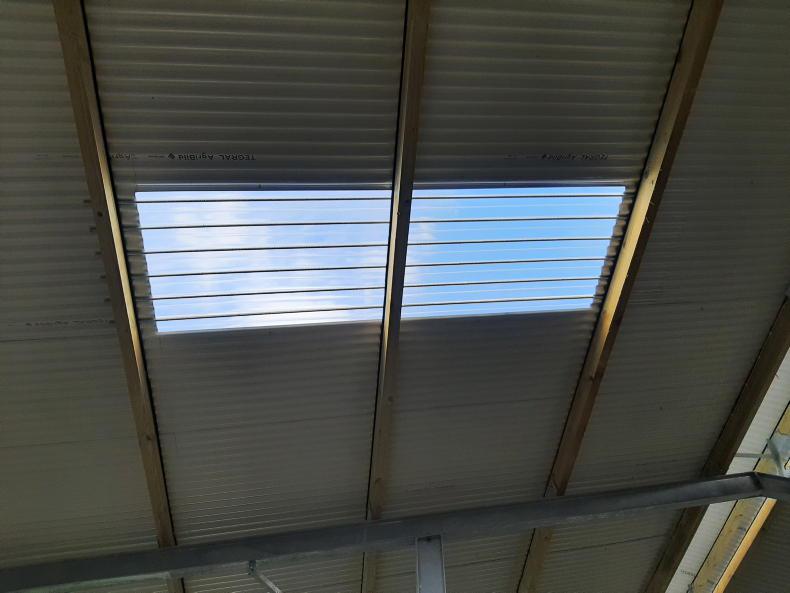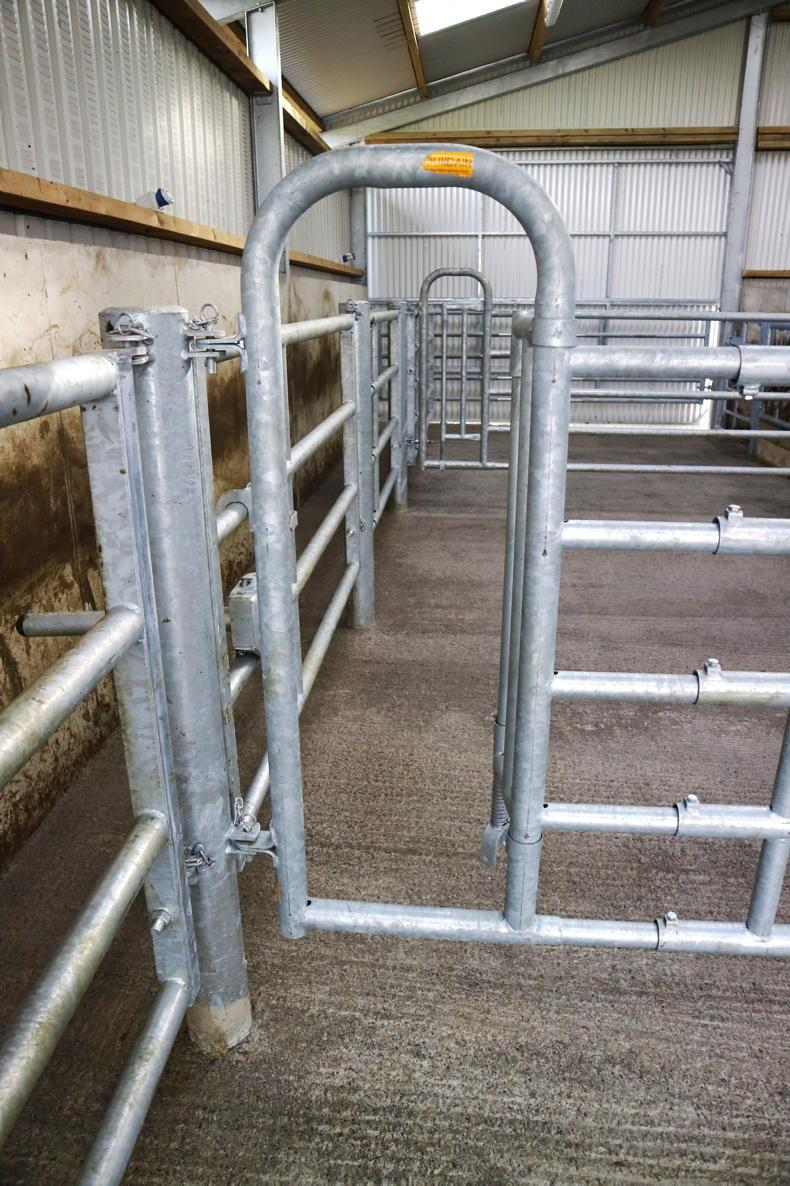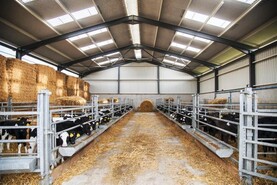A lot of farm accidents happen in the blink of an eye, but, unfortunately, they can have lifelong or life ending consequences.
While accidents can occur even with the most safety conscious operators, there are certain aspects a high percentage of farms can improve on and this rings true for farm buildings.
Most farms have completed a farm safety code of practice, but, regrettably, this has been completed – in some cases – hastily in advance of a Bord Bia sustainable assurance audit or a farm inspection.
Leaving aside the legal requirement of having a safety statement in place, every farmer should put some time aside to assess just how safe their farm is and identify areas where improvements can be made, both immediately and longer term.
Here, we identify some of the greatest risk areas.
Accessing heights and transparent roof sheeting: Falls from a height are typically linked to serious injuries and are a significant contributor to fatalities. A common risk area is falling through translucent roof sheeting that may have been painted over, or sheets that have lost their integrity with age and cannot withstand the load.
All new sheds built under TAMS funding must have safety bars in place and these can also be retrofitted. The appropriate safety measures should always be taken at height and roof sheets should never be painted.

Steel bars under translucent roof sheeting are mandatory in new buildings which are reciving grant aid and can also be retrofitted.
Adequate yard lighting: Dairy enterprises continue to expand rapidly and a common work practice on many large units is cows being herded and milking starting under the cover of darkness. In this regard, adequate yard lighting is a must and now is the time to organise it.Shed integrity: With weather patterns changing, storms have become a more common occurrence in recent years. There is a tendency when something that may fall foul of a storm comes through unscathed to forget about it until the next one is on its way. Ask yourself if there is roof sheeting or slates on older sheds that need addressing or is there a swinging door that is a safety concern and could it be replaced with a sliding door. 
Swinging gates have been fitted inside this sliding door and is an added safety feature.
Escape routes: Calving gates have become much more common on farms in recent years, but there is still an unacceptably high number of accidents relating to cows calving. A quick exit area or safe zone where you can quickly access protection can be provided in a low-cost manner with two uprights and some sheeting, or horizontal bars in a calving pen offering an area where a farmer can quickly seek shelter if required. 
This gate doubles up to provide quick access to the pen and an escape route if required.
Agitation points and open tanks: Despite the well-known dangers of agitating slurry or lifting individual slats to access a tank for agitation, there is still a high degree of risk taken each year. TAMS funding is available to install a new agitation point with a safety cover and extend a tank so that agitation is not taking place indoors. All open or external tanks should be fenced off securely, with access points always locked when not in use. Hazardous substances: Every farm should have a safe place to store hazardous substances, such as herbicides, detergents and animal medicines, with a locking mechanism. Loading areas: A safe loading area is a must for any farmer transporting animals regularly. A readily accessible exit point should also be provided in all units, particularly those handling slaughter-fit animals.
A lot of farm accidents happen in the blink of an eye, but, unfortunately, they can have lifelong or life ending consequences.
While accidents can occur even with the most safety conscious operators, there are certain aspects a high percentage of farms can improve on and this rings true for farm buildings.
Most farms have completed a farm safety code of practice, but, regrettably, this has been completed – in some cases – hastily in advance of a Bord Bia sustainable assurance audit or a farm inspection.
Leaving aside the legal requirement of having a safety statement in place, every farmer should put some time aside to assess just how safe their farm is and identify areas where improvements can be made, both immediately and longer term.
Here, we identify some of the greatest risk areas.
Accessing heights and transparent roof sheeting: Falls from a height are typically linked to serious injuries and are a significant contributor to fatalities. A common risk area is falling through translucent roof sheeting that may have been painted over, or sheets that have lost their integrity with age and cannot withstand the load.
All new sheds built under TAMS funding must have safety bars in place and these can also be retrofitted. The appropriate safety measures should always be taken at height and roof sheets should never be painted.

Steel bars under translucent roof sheeting are mandatory in new buildings which are reciving grant aid and can also be retrofitted.
Adequate yard lighting: Dairy enterprises continue to expand rapidly and a common work practice on many large units is cows being herded and milking starting under the cover of darkness. In this regard, adequate yard lighting is a must and now is the time to organise it.Shed integrity: With weather patterns changing, storms have become a more common occurrence in recent years. There is a tendency when something that may fall foul of a storm comes through unscathed to forget about it until the next one is on its way. Ask yourself if there is roof sheeting or slates on older sheds that need addressing or is there a swinging door that is a safety concern and could it be replaced with a sliding door. 
Swinging gates have been fitted inside this sliding door and is an added safety feature.
Escape routes: Calving gates have become much more common on farms in recent years, but there is still an unacceptably high number of accidents relating to cows calving. A quick exit area or safe zone where you can quickly access protection can be provided in a low-cost manner with two uprights and some sheeting, or horizontal bars in a calving pen offering an area where a farmer can quickly seek shelter if required. 
This gate doubles up to provide quick access to the pen and an escape route if required.
Agitation points and open tanks: Despite the well-known dangers of agitating slurry or lifting individual slats to access a tank for agitation, there is still a high degree of risk taken each year. TAMS funding is available to install a new agitation point with a safety cover and extend a tank so that agitation is not taking place indoors. All open or external tanks should be fenced off securely, with access points always locked when not in use. Hazardous substances: Every farm should have a safe place to store hazardous substances, such as herbicides, detergents and animal medicines, with a locking mechanism. Loading areas: A safe loading area is a must for any farmer transporting animals regularly. A readily accessible exit point should also be provided in all units, particularly those handling slaughter-fit animals. 








 This is a subscriber-only article
This is a subscriber-only article










SHARING OPTIONS: